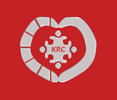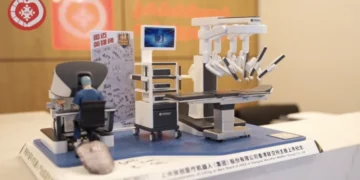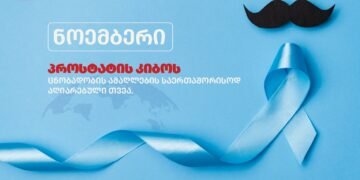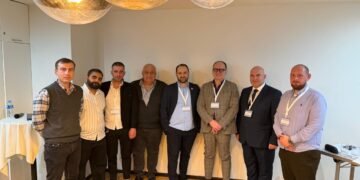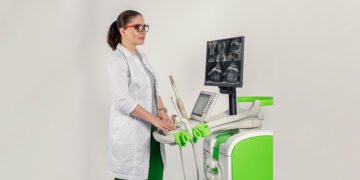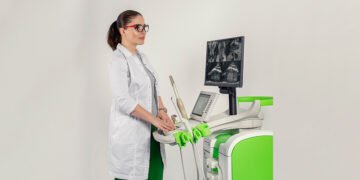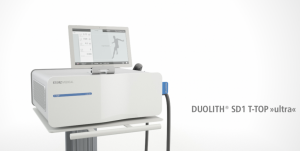
Shockwave therapy is one of the most highly effective treatment and rehabilitation methods in modern healthcare. Today, its delicate mechanism has no analogues in terms of the impact on the body tissues. Shockwave therapy is widely used in such areas of medicine as: urology, andrology, traumatology, physical therapy, orthopedics, sports medicine, neurology, aesthetic medicine, and dermatology.
The main effects of this type of therapy are: rapid pain management, anti-inflammatory effect, improvement of blood circulation, restoration of movement, wound healing, stimulation of neoangiogenesis (development of new blood vessels) and metabolism, resorption of fibrous areas and calcinates, tissue regeneration.
\ Shockwave therapy is noninvasive and does not require anesthesia. It is an ideal method of treatment and rehabilitation in both acute and chronic stages of the disease.
Shockwave therapy effectively treats: impotence, prostatitis, Peyronie’s disease, pelvic pain, joint pain, nerve pain of all kinds.
What is the mechanism of shockwave therapy?
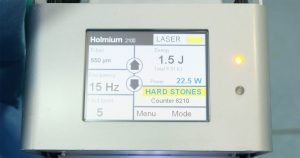
A shock wave is practically an acoustic wave, a low-frequency pulse of a certain amplitude, carrying high energy to the damaged tissue. This energy soothes inflammation, relieves pain, stimulates the development of new blood vessels, the process of tissue healing and regeneration.

High-energy acoustic waves go deeply into the tissue and have a therapeutic effect, accelerating the rehabilitation of inflamed and damaged areas, cell regeneration and renewal.
The biological mechanism of shockwave therapy is based on the principle of cavitation, changes in the permeability of cell membranes in inflamed tissues.

An acoustic wave usually easily penetrates the elastic membrane of healthy cells, but does not affect them, while cavitation (instantaneous stretching, subsequent closure) occurs when the pulse encounters inflamed, damaged elements, which results in destruction of the damaged area, and, through successive activated biochemical processes, they are replaced by new cells.
Shockwave therapy has several simultaneous effects:
- Facilitates the development of new blood vessels
The most important factor for the repair process of damaged tissue is increased blood circulation. Under the influence of acoustic waves, indicators of tissue growth and repair change. This concerns:
BMP _ Bone morphogenetic protein,
eNOS _ Endothelial nitric oxide synthase,
VEGF _ Vascular endothelial growth factor,
PCNA _ Proliferating cell nuclear antigen.
The influence of these indicators stimulates formation and growth of new arterioles. Newly formed blood vessels improve perfusion of tissue and its oxygenation, which in turn provides both wound healing and restoration of the damaged tissue.
- Soothes chronic inflammation
A key role in suppressing the inflammatory process is played by cloud cells that help produce chemokines and cytokines. The activity of these cells increases when they are exposed to acoustic waves. As a result, inflammation stops, the pain disappears and the tissue regenerates quickly.

- Ensures dispersion of pain mediator, “Substance P”
Substance P is the neurotransmitter that transmits information about pain via C-fibers. It is this neuropeptide that is associated with constant, intense and chronic pain and relays pain to the central nervous system. When the concentration of Substance P decreases, the stimulation of afferent nerve fibers decreases and, as a result, pain decreases and disappears. In addition, the decrease of Substance P, as well as histamine and other metabolites, prevents formation of inflammatory edema, which also facilitates pain reduction. Under the influence of acoustic waves, the concentration of Substance P decreases significantly.
- Stimulates collagen production
The necessary condition for healing and restoration of bone, joint and tendon structures is collagen production of relevant intensity. Under the influence of shockwave therapy, the synthesis of procollagen increases, the production of new collagen fibers accelerates, which ensures the strength of these structures.
- Damages calcified fibroblasts
Injury to and microdamage of a tendon are most often caused by calcinosis. Acoustic waves effectively damage calcified fibroblasts, which are then removed from the body’s lymphatic system.
- Provides deactivation of trigger points
Trigger points are the main cause of pain in the neck, back, shoulders or extremities. These points are formed from knots of muscle fibers tightly connected by sarcomeres.
These sarcomeres contract and attach to each other so tightly that blood circulation is impaired. As a result, abnormal/pathological connections are formed, irritating the nerve endings further, and this causes the muscle fibers to contract even more.
Such a cycle is called a metabolic crisis. Shockwave therapy stops its formation in myofilaments and relieves pain.
Brief information about the Storz system
The Duolith SD1 T-TOP system for shockwave therapy was created by Storz Medical, the world’s leader in research of the effects of infrasound spectrum waves on the human body.
The effects of the device’s shock pulse generation and focusing and tissue exposure have been verified by 30 years of practical applications and confirmed by numerous scientific studies.
The Storz system, as the most advanced high-tech equipment, has a unique ability to customize the acoustic waves in the tissue and, correspondingly, vary the depth of therapeutic action and the energy range for each patient, which ensures its high efficiency.
By focusing on a wide area of generated energy and targeting, acoustic waves can reach damaged, inflamed areas of the body with maximum precision and effectively treat them.
In addition, shockwave therapy does not have any side effects.
